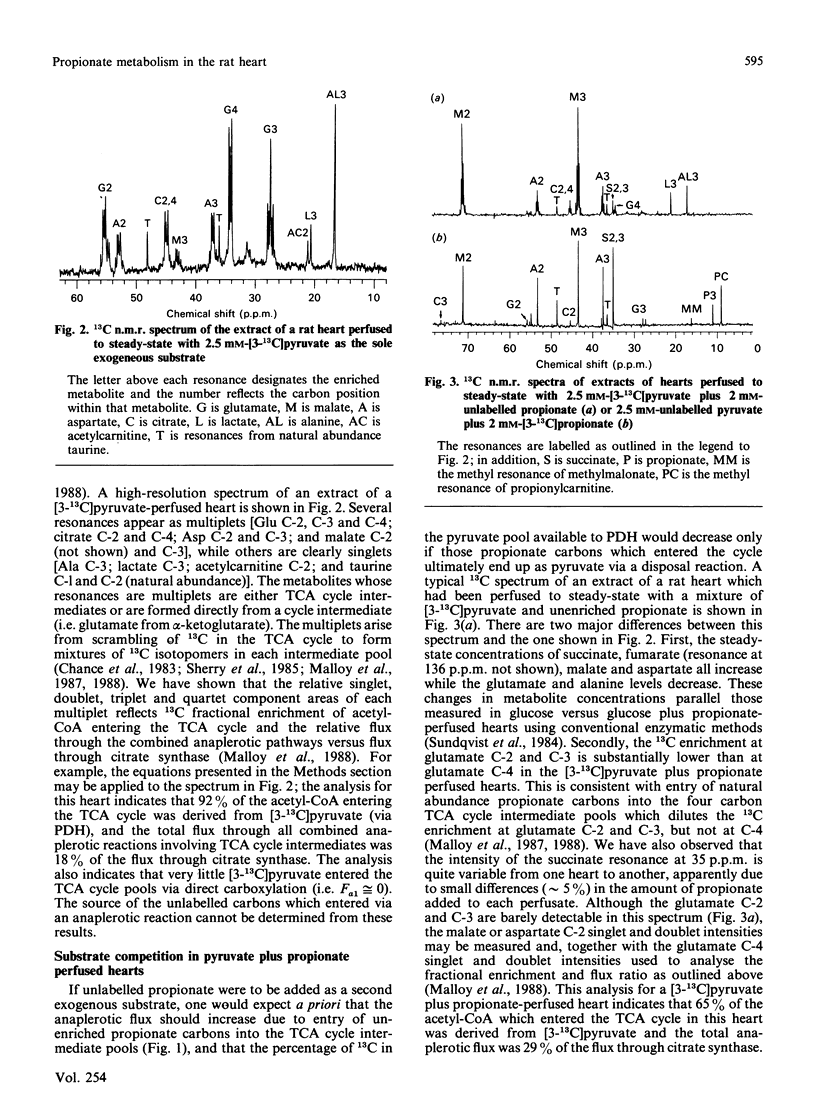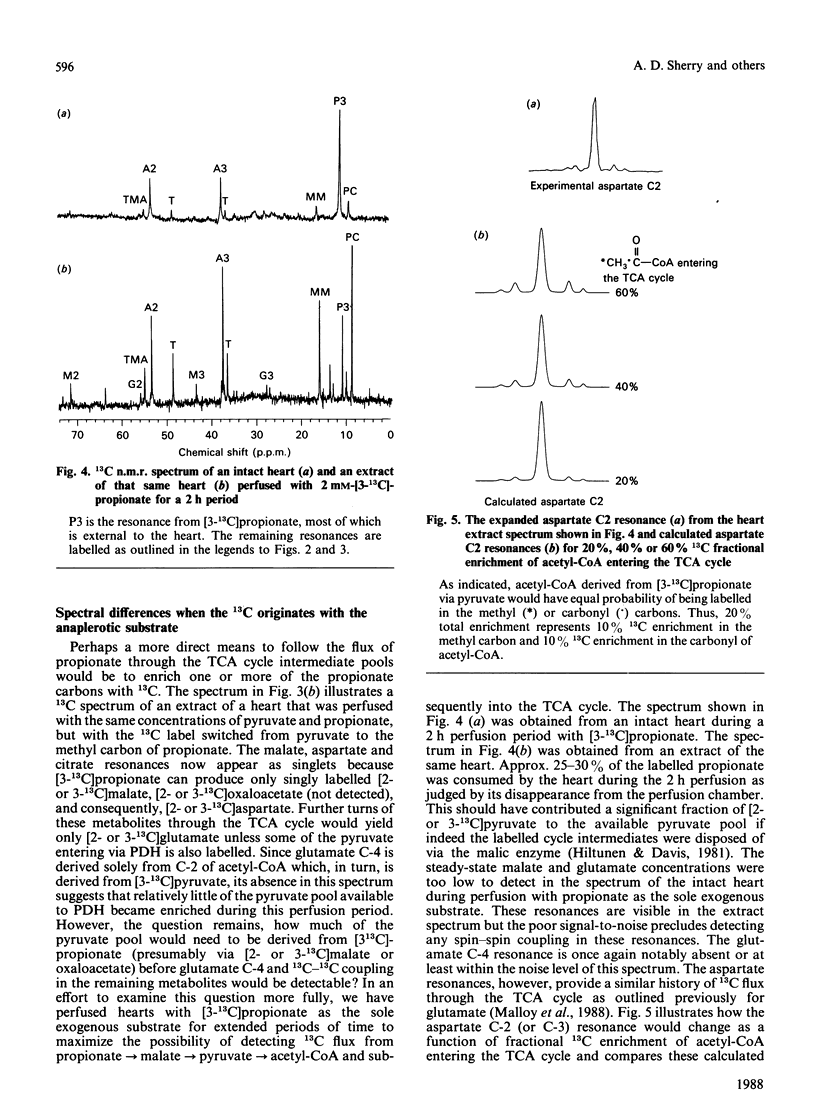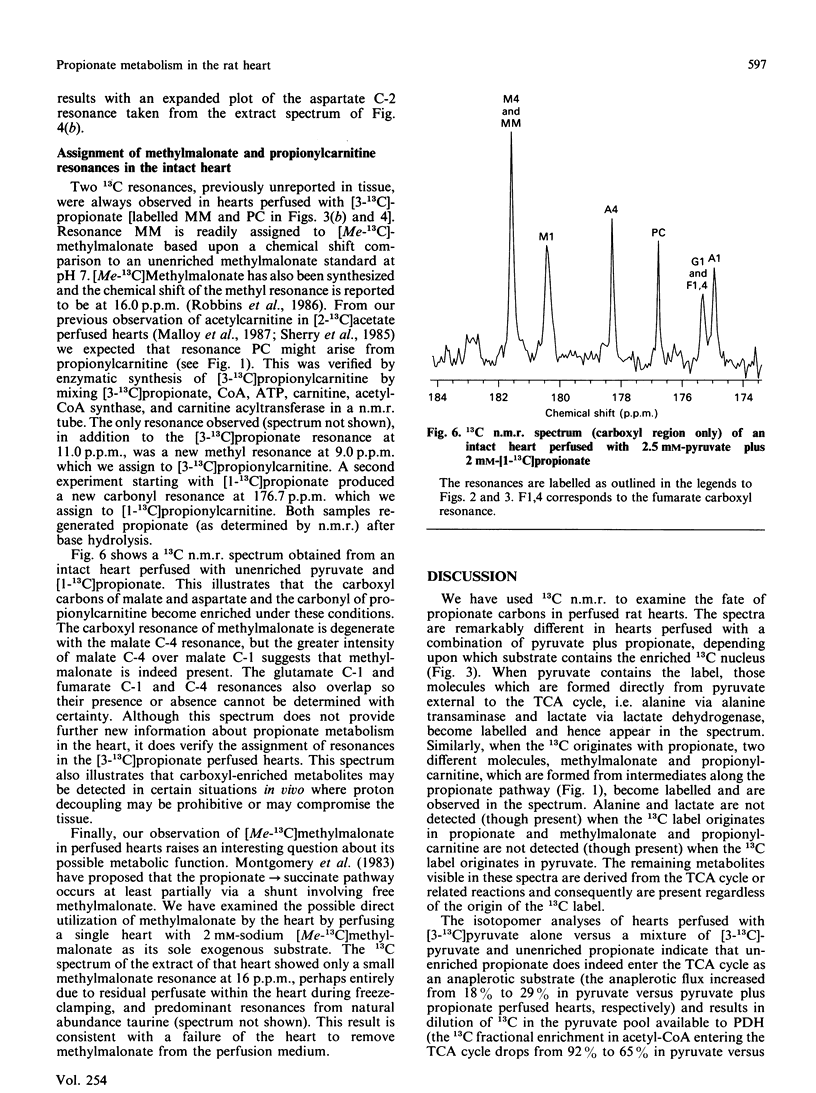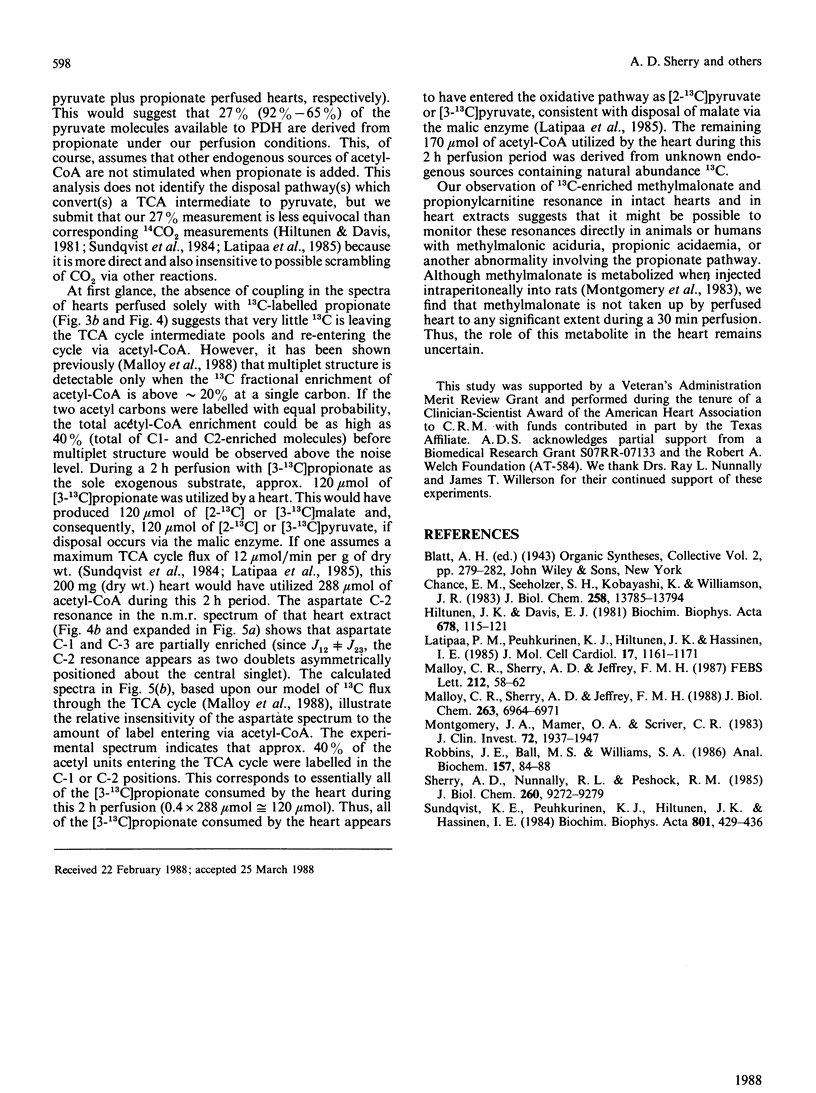Abstract
High-resolution 13C n.m.r. spectroscopy has been used to examine propionate metabolism in the perfused rat heart. A number of tricarboxylic acid (TCA) cycle intermediates are observable by 13C n.m.r. in hearts perfused with mixtures of pyruvate and propionate. When the enriched 13C-labelled nucleus originates with pyruvate, the resonances of the intermediates appear as multiplets due to formation of multiply-enriched 13C-labelled isotopomers, whereas when the 13C-labelled nucleus originates with propionate, these same intermediates appear as singlets in the 13C spectrum since entry of propionate into the TCA cycle occurs via succinyl-CoA. An analysis of the isotopomer populations in hearts perfused with [3-13C]pyruvate plus unlabelled propionate indicates that about 27% of the total pyruvate pool available to the heart is derived directly from unlabelled propionate. This was substantiated by perfusing a heart for 2 h with [3-13C]propionate as the only available exogenous substrate. Under these conditions, all of the propionate consumed by the heart, as measured by conventional chemical analysis, ultimately entered the oxidative pathway as [2-13C] or [3-13C]pyruvate. This is consistent with entry of propionate into the TCA cycle intermediate pools as succinyl-CoA and concomitant disposal of malate to pyruvate via the malic enzyme. 13C resonances arising from enriched methylmalonate and propionylcarnitine are also detected in hearts perfused with [3-13C] or [1-13C]propionate which suggests that 13C n.m.r. may be useful as a non-invasive probe in vivo of metabolic abnormalities involving the propionate pathway, such as methylmalonic aciduria or propionic acidaemia.
Full text
PDF





Selected References
These references are in PubMed. This may not be the complete list of references from this article.
- Chance E. M., Seeholzer S. H., Kobayashi K., Williamson J. R. Mathematical analysis of isotope labeling in the citric acid cycle with applications to 13C NMR studies in perfused rat hearts. J Biol Chem. 1983 Nov 25;258(22):13785–13794. [PubMed] [Google Scholar]
- Hiltunen J. K., Davis E. J. The disposition of citric acid cycle intermediates by isolated rat heart mitochondria. Biochim Biophys Acta. 1981 Nov 18;678(1):115–121. doi: 10.1016/0304-4165(81)90054-4. [DOI] [PubMed] [Google Scholar]
- Latipä P. M., Peuhkurinen K. J., Hiltunen J. K., Hassinen I. E. Regulation of pyruvate dehydrogenase during infusion of fatty acids of varying chain lengths in the perfused rat heart. J Mol Cell Cardiol. 1985 Dec;17(12):1161–1171. doi: 10.1016/s0022-2828(85)80112-7. [DOI] [PubMed] [Google Scholar]
- Malloy C. R., Sherry A. D., Jeffrey F. M. Carbon flux through citric acid cycle pathways in perfused heart by 13C NMR spectroscopy. FEBS Lett. 1987 Feb 9;212(1):58–62. doi: 10.1016/0014-5793(87)81556-9. [DOI] [PubMed] [Google Scholar]
- Malloy C. R., Sherry A. D., Jeffrey F. M. Evaluation of carbon flux and substrate selection through alternate pathways involving the citric acid cycle of the heart by 13C NMR spectroscopy. J Biol Chem. 1988 May 25;263(15):6964–6971. [PubMed] [Google Scholar]
- Montgomery J. A., Mamer O. A., Scriver C. R. Metabolism of methylmalonic acid in rats. Is methylmalonyl-coenzyme a racemase deficiency symptomatic in man? J Clin Invest. 1983 Dec;72(6):1937–1947. doi: 10.1172/JCI111158. [DOI] [PMC free article] [PubMed] [Google Scholar]
- Robbins J. E., Ball M. S., Williams S. A. Synthesis and NMR spectra of 13C-labeled coenzyme A esters. Anal Biochem. 1986 Aug 15;157(1):84–88. doi: 10.1016/0003-2697(86)90199-5. [DOI] [PubMed] [Google Scholar]
- Sherry A. D., Nunnally R. L., Peshock R. M. Metabolic studies of pyruvate- and lactate-perfused guinea pig hearts by 13C NMR. Determination of substrate preference by glutamate isotopomer distribution. J Biol Chem. 1985 Aug 5;260(16):9272–9279. [PubMed] [Google Scholar]
- Sundqvist K. E., Peuhkurinen K. J., Hiltunen J. K., Hassinen I. E. Effect of acetate and octanoate on tricarboxylic acid cycle metabolite disposal during propionate oxidation in the perfused rat heart. Biochim Biophys Acta. 1984 Oct 16;801(3):429–436. doi: 10.1016/0304-4165(84)90149-1. [DOI] [PubMed] [Google Scholar]


